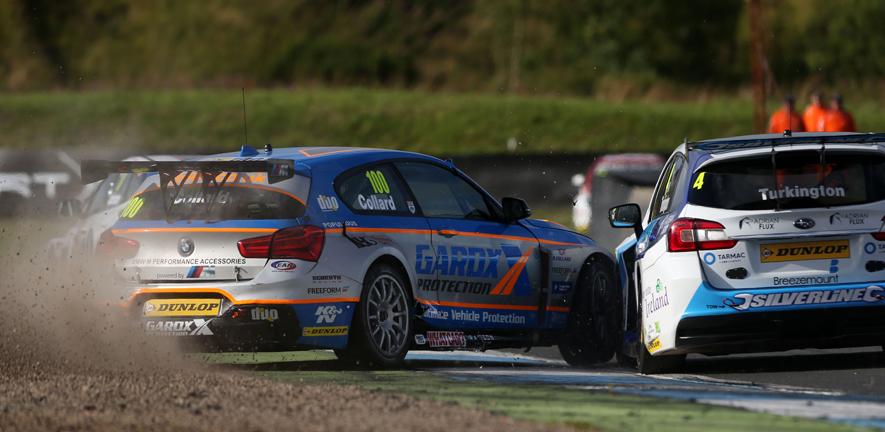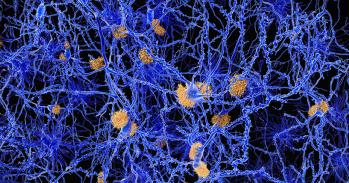
Cambridge researchers are to take part in a study to examine the impact of concussion in motorsports, with the aim of reducing traumatic brain injury and helping drivers recover.
Cambridge researchers are to take part in a study to examine the impact of concussion in motorsports, with the aim of reducing traumatic brain injury and helping drivers recover.
This represents a tremendous opportunity to improve the management of drivers with concussion and traumatic brain injury in terms of assisting recovery and enabling return to safe driving
Peter Hutchinson
The RESCUE-RACER study, announced this week, is a two-year study of motorsport concussion, in partnership with world motorsport’s governing body Fédération Internationale de l'Automobile (FIA). It will incorporate the most promising and technologically advanced concussion assessment tools currently available to establish and assess the progression of concussion symptoms in motorsports.
The study consists of two parts. The first investigates 40 UK-based racing drivers at baseline, recruiting mainly from the British Touring Car Championship and its associated series. Post-injury tests are open to international motorsport competitors, to be carried out during the 2019 race season. The second part assesses a minimum of 20 drivers in the acute post-injury period (up to three weeks after injury).
The tests will involve measures such as eye tracking, balance, and reaction time, with data collected using technology developed by Neuro Kinetics, Inc, with whom the researchers are collaborating. The team will also collect data using the Cambridge Neuropsychological Test Automated Battery (CANTAB) as well as salivary biomarkers. They will use the latest, powerful 7T functional Magnetic Resonance Imaging (fMRI) scanners, which assess brain activity by measuring changes in blood flow.
The Principal Investigator for RESCUE-RACER is Professor Peter Hutchinson from Cambridge’s Department of Clinical Neurosciences, and a neurosurgeon at Cambridge University Hospitals NHS Foundation Trust.
“The project represents a significant step for motorsport medicine,” says Professor Hutchinson. “RESCUE-RACER will follow drivers through a racing season and uses state-of-the-art assessment tools and imaging. This represents a tremendous opportunity to improve the management of drivers with concussion and traumatic brain injury in terms of assisting recovery and enabling return to safe driving.”
Primary study support is provided by the FIA’s 2018 Sid Watkins Scholar and RESCUE-RACER Study Coordinator Dr Naomi Deakin. Dr Deakin is a PhD student at Robinson College, where Professor Hutchinson is a fellow and Director of Studies for Clinical Medicine.
The goal of the study is to establish the progression of symptoms and signs of concussion sustained in motorsport activity using a comprehensive battery of scientific tests by exploring emerging technologies for objective assessments that can assist with concussion diagnosis and prognosis. Improved care for head-injured racers could translate into enhanced care for road-traffic accident victims from the general population.
“After an accident there is obvious concern for the individual racer, but a concussed driver also presents a potentially lethal risk to other competitors as well as spectators and crew,” says Dr Deakin.
“We hope that our study will lead to evidenced-based, medical decision-making protocols for track-side evaluation after potentially concussive incidents, as well as enabling a plan for clinical management of motorsports concussion, including the important ‘return-to-race’ decision.”
The RESCUE-RACER (Research Evaluating Sports ConcUssion Events – Rapid Assessment of Concussion and Evidence for Return) programme is funded by the FIA Foundation and supported by Neuro Kinetics. It is jointly sponsored by the University of Cambridge and Cambridge University Hospitals NHS Foundation Trust, which comprises Addenbrooke’s Hospital and the Rosie Maternity Hospital.
Adapted from a press release by Neuro Kinetics.

The text in this work is licensed under a Creative Commons Attribution 4.0 International License. Images, including our videos, are Copyright ©University of Cambridge and licensors/contributors as identified. All rights reserved. We make our image and video content available in a number of ways – as here, on our main website under its Terms and conditions, and on a range of channels including social media that permit your use and sharing of our content under their respective Terms.




